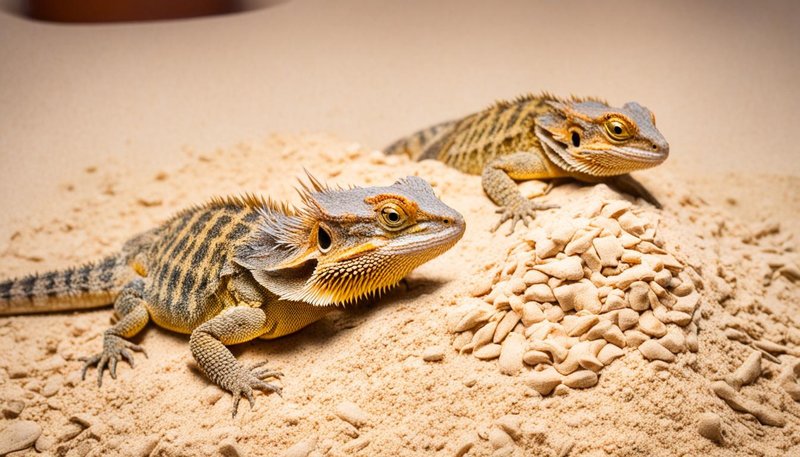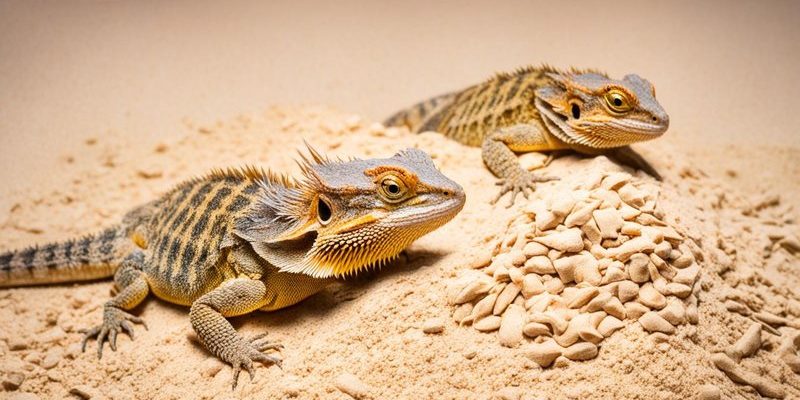
So, if you’ve ever wondered how these unique lizards go about finding a mate and raising their young, you’re in the right place. We’ll dive deep into everything from courtship behaviors to egg-laying, making sure you have a clear picture of what goes on in the fascinating world of bearded dragon reproduction.
Understanding Bearded Dragon Mating Season
Every year, bearded dragons have specific seasons for breeding, often timed with the warming temperatures of spring. When the days get a little longer and warmer, it signals a call to action for these reptiles, who are naturally inclined to mate. During this time, both males and females prepare for courtship and breeding, so it’s essential to understand how their seasonal changes impact their behavior.
You might notice male bearded dragons exhibiting territorial behavior by bobbing their heads or puffing out their throats, which is pretty much their way of saying, “Hey, I’m the best catch around!” This courtship display not only attracts females but also keeps other males at bay. For interested females, the visual display is just as important; they’ll look for a strong, healthy male, which is often indicated by vibrant colors and confident movements.
The Significance of Temperature and Environment
The breeding season is heavily influenced by temperature and environmental factors. As temperatures rise, so does the dragon’s desire to mate. If you are keeping bearded dragons as pets, replicating these conditions can encourage natural behaviors. Make sure their environment mimics the warmth of the Australian sun, with proper basking spots that help regulate their heat.
Additionally, a suitable habitat encourages proper stress levels, which is crucial for mating success. The right balance of humidity and cleanliness also plays a role. After all, if you’re not comfortable in your surroundings, would you be in the mood for romance?
The Courtship Dance: How Bearded Dragons Attract Each Other
Once mating season kicks off, the male initiates courtship with various displays. This includes head bobbing, which might look silly, but it’s actually quite important. Think of it as showing off his dance moves to impress the female. He might also wave his arms as a sign of submission, a way to showcase he’s no threat and just wants to get to know her better.
This entire courtship process can take several days. It’s not just a one-and-done kind of affair! Males will often engage in a series of behaviors, including following the female around, while she assesses his fitness for breeding. It’s like a game of “who can impress whom more” until one finally gives the nod to mate.
Signs of Readiness for Mating
You might be wondering how to tell if your bearded dragons are ready to mate. One of the first signs is when a female becomes receptive to the male’s advances, which can be indicated by her willingness to stay close to him. If she’s displaying a relaxed posture rather than her typical defensive stance, that’s a positive sign!
Another indicator is if the female suddenly starts digging or scratching at the substrate. This behavior often means she’s preparing for laying eggs. If you see this, you’ll want to ensure she has a suitable nesting area to make her feel safe and secure.
The Actual Mating Process
Once both dragons are on board, the mating process begins. It can last anywhere from a few minutes to several hours! During this time, the male will clasp the female’s neck with his mouth—kind of like a gentle hold—but this is perfectly normal. It’s a critical part of mating, allowing him to stay in place while the deed is done.
After mating, the female might exhibit some changes in behavior, such as increased appetite or a desire to dig. This is a good sign she’s preparing to lay eggs. They can produce 15 to 20 eggs in a single clutch, depending on the individual and environmental factors.
Egg Laying: What Comes Next?
After mating, the female will eventually need to lay her eggs. This usually happens about 4-6 weeks after copulation. Providing her with a suitable laying box is essential because she needs a safe space to bury her eggs. Use a mix of sand and soil to create the perfect environment.
Once the eggs are laid, they should incubate for about 60 to 90 days before hatching. During this time, you’ll want to keep the temperature and humidity levels stable to ensure healthy development. It’s like waiting for a cake to bake—patience is key!
Caring for Hatchlings
Once those eggs hatch, you’ll have a bunch of adorable bearded dragon hatchlings on your hands! They each emerge tiny and ready to explore the world. At this stage, they’ll need proper care and attention to thrive. Make sure they have access to a warm basking area, food like insects and greens, and plenty of water.
Here’s the thing: baby bearded dragons are quite active and require ample space to roam. Setting up a separate enclosure might be a good idea to reduce stress and competition with adult dragons.
Common Challenges in Breeding
Breeding bearded dragons can come with its own set of challenges. One of the most significant issues is infertility. If your female doesn’t produce viable eggs or doesn’t lay at all, it might be due to improper temperatures or lack of nutrition during the breeding process.
Another challenge is ensuring the right number of males and females in your breeding setup because too many males can lead to aggressive behavior. Monitor their interactions closely to keep everyone safe and happy.
Breeding bearded dragons and understanding their reproductive behavior can be a rewarding yet complex journey. From navigating the courtship dance to caring for hatchlings, it’s all part of the adventure. By creating the right environment and closely observing their behaviors, you can enjoy this fascinating aspect of their lives.
Remember, just like any relationship, patience and understanding are key. Whether you’re a budding breeder or just curious about these charming reptiles, there’s always something new to learn. Enjoy the process and the beautiful connections that come with it!

